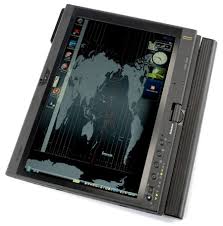
I realize that my copy of Windows 7 is only the Release Candidate (RC) version, but I can't imagine that the upgrading feature will improve that much in the final version of Windows 7. If you've been following my blogs, you know that I have a Lenovo Thinkpad X200 Tablet PC. I also have 2 different hard drives, so I decided to do a little experiment. On the first HD, I did a clean install of Windows 7. On the second HD, I loaded Vista, and then upgraded to Windows 7. How can I afford to do all this and maintain my productivity? I can do this at home because I have a few other computers that I can use while I'm running my little experiments.
If you've done many operating system upgrades, you know that you always get better system performance (speed, efficiency, stability, etc.) when you do a clean install. However, if you do a clean install, you have to reinstall all your applications, customize your settings, etc. It can be a real hassle. At the end of the day, you're always better if you do a clean install. An upgrade can cause its share of problems. According to Microsoft, Windows 7 is only considered a "minor upgrade" from Windows Vista. So, you'd think that an upgrade should be relatively straight-forward, no? Perhaps that's the case if you hardly have any applications installed. In my case, I have quite a few and here's what I found:
- Slower overall system performance on the "upgrade" vs. the clean install. Not a surprise.
- Slower boot-up times on the the "upgrade" vs. the clean install. It still boots faster than Vista, but it's about 20 seconds slower compared to the clean install.
- Some funny things happening with the fingerprint reader and touch screen calibration. More to come as I experiment. I realize that many of the drivers may not be ready for this machine. Plus, some of the ThinkVantage utilities are probably not compatible with Win7 at this point.

On a related note, everyone please realize that as of now, Microsoft is not supporting an upgrade from Windows 7 RC1 to the release version of Windows 7.
ReplyDeleteThe official word is that you will not be able to upgrade at all. You'll have to do a clean install. I'm sure there will be some workarounds/hacks or possibly an unsupported option from MS eventually, but beware. If you choose to upgrade from Vista to Windows 7 RC 1, you will probably need to do a clean install when Win 7 gets officially released. The good thing is that the RC 1 license won't expire until June next year so you can procrastinate a while.
Also, Windows 7 supposedly uses Vista drivers, but they're not always compatible, at least in RC 1 form. I've seen Vista drivers that won't install in Win 7 at all (possibly due to inability to recognize the Windows version), but they may be able to be used if you just "upgrade" to Win 7 over top of Vista, but don't bet on this 100% of the time.
Lastly, Win 7 RC 1 will not upgrade/install over a Windows XP installation. It just sets the old install aside and does, essentially, a clean install of itself with your old OS sitting in a directory on the system drive. This is true for the full release as well, supposedly.
Right, you can't upgrade from XP to Win7 unless you first upgrade to Vista (no need to activate, just upgrade), and then upgrade from Vista to Win7. I did this on an old laptop and it was a hassle (but it worked).
ReplyDelete